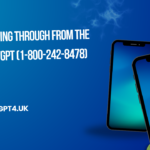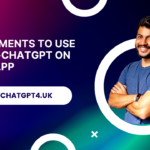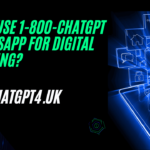In today’s fast-paced digital world, the demand for accurate and efficient transcription services has grown significantly. With the rise of remote work and online communication, professionals across various industries require reliable tools to convert spoken language into written text.
Otter AI, an advanced artificial intelligence-powered transcription service, has emerged as a game-changer in this domain. In this article, we will explore the capabilities, features, and benefits of Otter AI, and how it is transforming the way we transcribe, collaborate, and share information.
What is Otter AI?
Otter AI is an innovative speech-to-text transcription tool developed by a California-based company called Otter.ai. It utilizes cutting-edge artificial intelligence and machine learning algorithms to convert spoken language into text in real-time.
With its highly accurate transcription capabilities, Otter AI enables users to capture and store conversations, meetings, interviews, lectures, and other spoken content effortlessly.
How Does Otter AI Work?
Otter AI leverages advanced natural language processing (NLP) techniques and deep learning algorithms to process and analyze audio recordings. By utilizing automatic speech recognition (ASR) technology, Otter AI can accurately transcribe spoken words and generate a text-based output. The system continuously learns and improves its accuracy over time, adapting to different accents, speech patterns, and languages.
Key Features of Otter AI
- Real-time Transcription: Otter AI excels at providing real-time transcription during live events and meetings. It captures spoken words as they are uttered, instantly displaying the text on the user’s screen. This feature enables participants to follow along and refer back to the transcription during and after the event.
- Speaker Identification: Otter AI can distinguish between multiple speakers and assign labels to each individual in the transcription. This capability is particularly valuable in scenarios such as panel discussions or interviews where different participants are speaking. It simplifies the process of identifying who said what, making it easier to navigate and reference specific sections of the transcript.
- Intelligent Search: Otter AI incorporates powerful search functionality, allowing users to find specific keywords or phrases within their transcriptions quickly. By simply typing a keyword, users can instantly locate relevant sections of the conversation. This feature saves time and enhances productivity when reviewing or referencing past discussions.
- Collaboration and Editing: Otter AI facilitates collaborative workflows by enabling users to share transcriptions with team members or colleagues. Multiple individuals can access and edit the same transcript simultaneously, enhancing communication and fostering efficient teamwork. Users can highlight important points, add comments, and collaborate seamlessly within the platform.
- Integration with Productivity Tools: Otter AI integrates with various productivity tools, including note-taking applications, project management platforms, and video conferencing software. This integration enables users to automatically import transcripts into their preferred tools, enhancing their overall workflow efficiency.
Use Cases of Otter AI
- Professional Meetings and Interviews: Otter AI simplifies the process of capturing and reviewing important details from business meetings and interviews. It ensures accurate documentation of conversations, eliminating the need for manual note-taking and minimizing the risk of missing critical information.
- Academic and Educational Settings: Otter AI proves invaluable in educational environments, where lectures and classroom discussions can be transcribed for students to review later. It enables students to focus on the content being discussed rather than frantically taking notes. Additionally, educators can utilize the transcripts for creating study materials, generating lecture summaries, and improving accessibility for students with hearing impairments.
- Content Creation and Journalism: Otter AI assists content creators, journalists, and writers by automatically transcribing interviews, speeches, or research material. It allows them to quickly reference specific quotes or details while writing articles, improving accuracy and saving time during the content creation process.
- Accessibility for the Hearing Impaired: Otter AI plays a vital role in making information more accessible for individuals with hearing impairments. By providing accurate transcriptions, it enables them to participate in conversations, lectures, and online events with ease.
Privacy and Security Considerations
Otter AI places a strong emphasis on privacy and data security. User recordings and transcriptions are encrypted and stored securely. Otter AI also offers flexible sharing options, allowing users to control who has access to their transcriptions and for how long.
It is crucial, however, to review the privacy policy and terms of service of any transcription tool to ensure compliance with applicable regulations and organizational policies.
Custom Vocabulary and Language Support
Otter AI allows users to create custom vocabularies, which is particularly useful for industries with specialized terminology or jargon. Users can add specific words or phrases to the system, improving the accuracy of transcriptions in those domains. Additionally, Otter AI supports multiple languages, making it a versatile tool for global users.
AI-Powered Editing and Correction
One of the standout features of Otter AI is its AI-powered editing capabilities. Users can make corrections to the transcriptions, and the system learns from these edits, improving its accuracy over time. As users interact with the tool and provide feedback, Otter AI adapts and refines its transcription performance, delivering increasingly precise results.
Transcription Accuracy and Reliability
Otter AI’s advanced AI algorithms and continuous learning processes contribute to its high accuracy in transcribing spoken content. While no transcription tool is perfect, Otter AI strives to provide reliable and precise transcriptions. Users can expect a consistently high level of accuracy, which significantly reduces the time and effort required for manual proofreading and editing.
Time-Saving and Productivity Boost
By automating the transcription process, Otter AI saves users a substantial amount of time. Instead of manually transcribing recordings or taking extensive notes, individuals can rely on Otter AI to generate accurate transcriptions in real-time or after the fact. This time-saving benefit translates into increased productivity and allows users to focus on other essential tasks.
Cost-Effectiveness and Scalability
Compared to hiring professional transcription services, Otter AI offers a cost-effective alternative. With Otter AI, users pay for the services based on their specific needs, such as the number of minutes or hours transcribed. This scalability ensures that users only pay for what they use, making it a budget-friendly option for businesses, researchers, students, and individuals.
Mobile App and Accessibility
Otter AI provides a mobile app that extends its accessibility and convenience. Users can record conversations on their smartphones or tablets, and the app seamlessly syncs with the web version. This mobility enables users to capture and transcribe content on the go, enhancing flexibility and adaptability for various situations.
Educational and Research Applications
In academic and research settings, Otter AI offers tremendous value. Students can record and transcribe lectures, ensuring comprehensive note-taking without missing important details.
Researchers can transcribe interviews, focus groups, and research discussions, enabling easier analysis and data extraction. Otter AI’s ability to organize and search through large volumes of transcribed content makes it an invaluable tool for knowledge discovery and research projects.
Training and E-Learning Resources
Otter AI can be leveraged as a training and e-learning resource. Organizations can create training materials by transcribing instructional videos or webinars.
With the transcription available, learners can follow along, refer back to specific sections, and reinforce their understanding. This application proves particularly beneficial for remote or asynchronous learning environments.
Customer Support and Continuous Improvement
Otter AI values its users and provides customer support to address any issues or inquiries. The company actively seeks user feedback to enhance its services continually. Through user input and ongoing development, Otter AI strives to improve accuracy, add new features, and stay at the forefront of transcription technology.
Conclusion
Otter AI has emerged as a leading solution for speech-to-text transcription, revolutionizing the way we capture, collaborate, and share information. Its real-time transcription, speaker identification, intelligent search, and collaboration features make it a powerful tool for professionals across various industries.
From business meetings to educational settings and content creation, Otter AI offers a reliable and efficient solution. By harnessing the power of artificial intelligence, Otter AI continues to push the boundaries of transcription technology, providing accurate and accessible text-based content for users worldwide.
FAQs
What is Otter AI?
Otter AI is an advanced artificial intelligence-powered transcription service that converts spoken language into text in real-time. It utilizes automatic speech recognition (ASR) technology and natural language processing (NLP) algorithms to accurately transcribe audio recordings.
How accurate is Otter AI in transcribing spoken content?
Otter AI strives to provide highly accurate transcriptions. While its accuracy is commendable, it’s important to note that no transcription tool is perfect. Factors such as audio quality, background noise, accents, and technical limitations can impact transcription accuracy.
Can Otter AI transcribe multiple speakers?
Yes, Otter AI can distinguish between multiple speakers and assign labels to each individual in the transcription. This feature is particularly useful in scenarios where different participants are speaking, such as meetings, panel discussions, or interviews.
Does Otter AI support languages other than English?
Yes, Otter AI supports multiple languages, making it suitable for users around the world. The system can transcribe content in various languages, but its accuracy may vary depending on the language and dialect.
Can I edit the transcriptions generated by Otter AI?
Yes, Otter AI allows users to edit transcriptions. Users can make corrections, add punctuation, or format the text as needed. Otter AI learns from these edits, improving its accuracy over time.
Is my data and transcription content secure with Otter AI?
Otter AI prioritizes user privacy and data security. User recordings and transcriptions are encrypted and stored securely. Otter AI also provides flexible sharing options, allowing users to control access to their transcriptions.
Can I use Otter AI on my mobile device?
Yes, Otter AI provides a mobile app that is available for both iOS and Android devices. The app allows users to record conversations on the go and seamlessly syncs with the web version of Otter AI.
What are the collaborative features of Otter AI?
Otter AI facilitates collaboration by enabling users to share transcriptions with team members or colleagues. Multiple individuals can access and edit the same transcript simultaneously, making it easy to collaborate and share information within the platform.
Can Otter AI integrate with other productivity tools?
Yes, Otter AI integrates with various productivity tools, including note-taking applications, project management platforms, and video conferencing software. This integration allows users to automatically import transcriptions into their preferred tools, enhancing workflow efficiency.
What are some common use cases for Otter AI?
Otter AI is widely used in various industries and settings. Some common use cases include transcribing business meetings, interviews, lectures, and conference calls. It is also valuable in academic settings for transcribing lectures, creating study materials, and improving accessibility for students.







